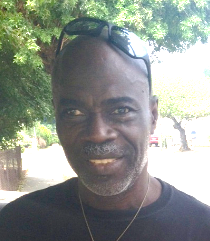By Sara Warner

Mr. Femi Collins, a disabled engineer who has become one of the L.A. County citizens impacted directly by closing of local courthouses. (Photo by Sara Warner)
When you are blind, the difference between 4 miles and 27 miles in Los Angeles can be dramatic. Here is Mr. Collins’ story.
After graduating with a BS and MS from Cal Poly Pomona University, Mr. Collins pursued a career in Engineering. With an advancing career as an engineer and a growing, supportive family, Mr. Collins personified the “American Dream” – until a disability changed his life.